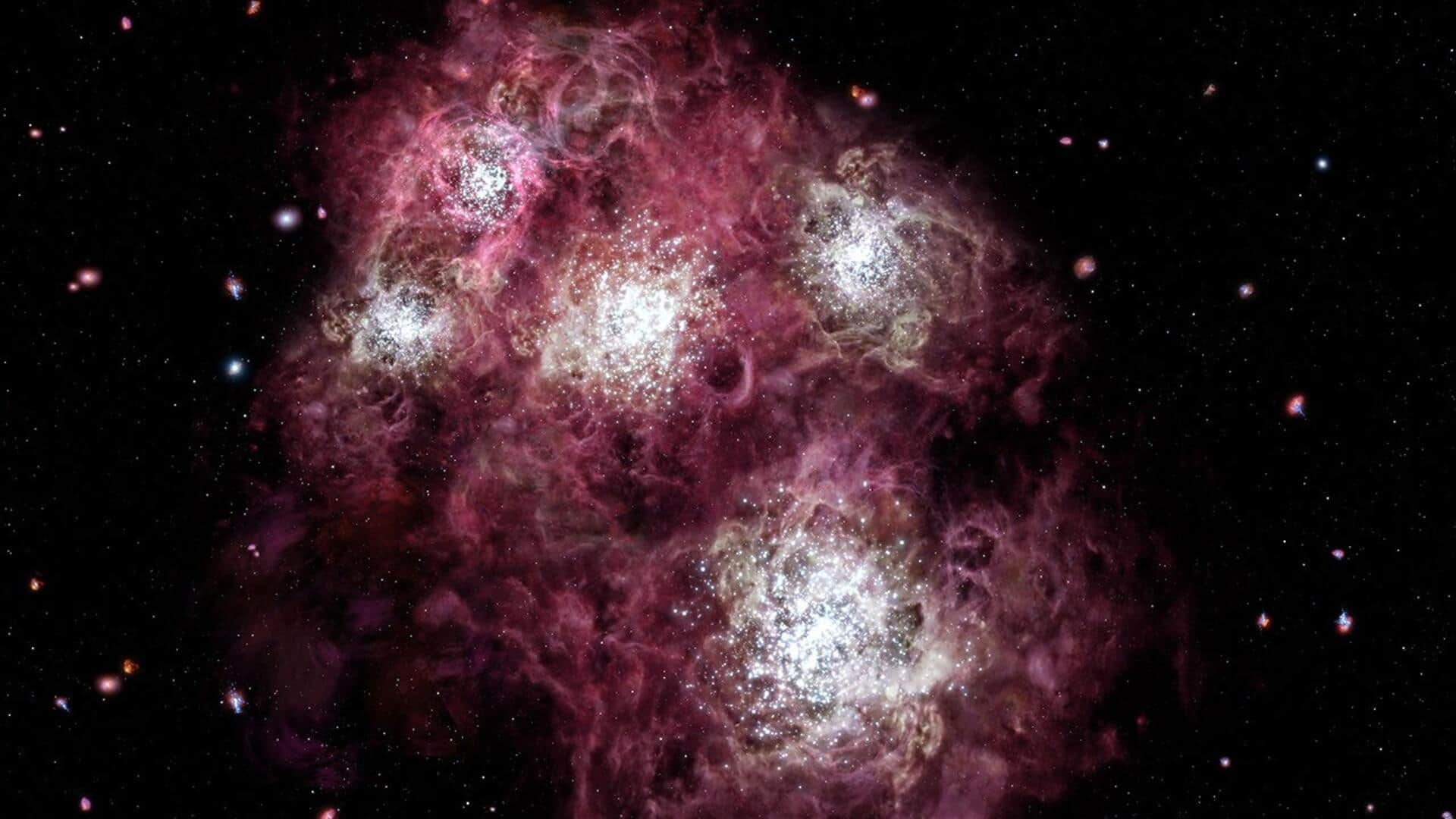
This distant massive galaxy has revealed secrets of early universe
What's the story
Using the James Webb Space Telescope (JWST) and Atacama Large Millimeter/sub-millimeter Array (ALMA), astronomers have studied a distant massive galaxy called A1689-zD1. The research team, led by Kasper E. Heintz from the University of Copenhagen, published their findings on the pre-print server arXiv. The study sheds light on the properties of A1689-zD1, especially regarding the dust production in this system. This could have major implications for our understanding of cosmic evolution and galaxy formation.
Galaxy profile
A1689-zD1's stellar mass and dust content
A1689-zD1 is a bright, highly-lensed massive galaxy with a redshift of about 7.13. It spans some 3,000 light years across and has an estimated stellar mass of around 2.6 billion solar masses. Earlier studies had revealed that the galaxy's metallicity is close to the solar value and it hosts a large amount of dust, about 15 million solar masses worth, making it an ideal candidate for studying interstellar dust in early cosmic epochs.
Research findings
Dust-to-gas and dust-to-metal ratios
The research team used JWST and ALMA to study A1689-zD1's dust content. They modeled the spectral energy distribution (SED) of the galaxy from ultraviolet to far-infrared wavelengths, determining its stellar mass, dust mass, visual attenuation, and star-formation rate. The study found that despite a high dust mass, A1689-zD1 has a remarkably low dust-to-gas (DTG) and dust-to-metal (DTM) mass ratios, 0.00051 and 0.061 respectively, due to its high metallicity and large gas mass of 28 billion solar masses.
Comparative analysis
Comparison with Milky Way and Magellanic Clouds
The DTG and DTM mass ratios for A1689-zD1 are an order of magnitude lower than those in the Milky Way, and Large Magellanic Cloud (LMC) or Small Magellanic Cloud (SMC). These findings indicate that most neutral atomic hydrogen (HI) gas in the line-of-sight to A1689-zD1 is relatively dust-poor compared to its chemical enrichment. The authors suggest this deviation could indicate a change in early galaxies' relative dust abundance or composition.
Implications
Implications for understanding early universe
The study's authors note that the deviation in DTG and DTM mass ratios is common in other metal-rich galaxies at similar redshifts (z 6). They conclude this suggests a drastic difference in the processes of dust formation and destruction or even dust emissivity itself for galaxies during the early universe.